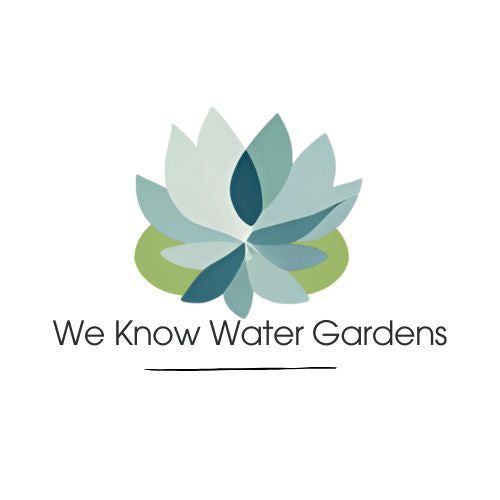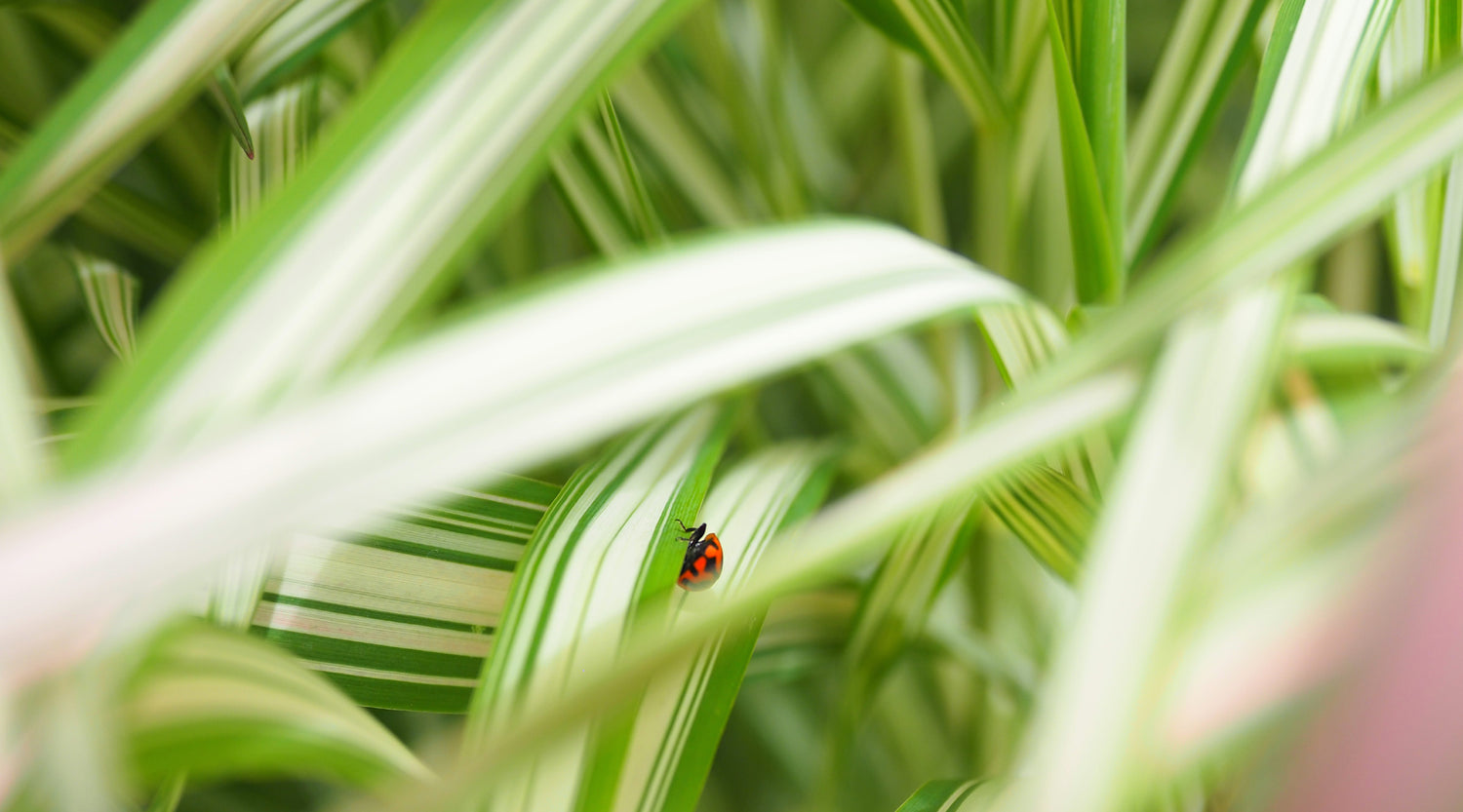Home
>
We Know Water Gardens Blog
>
Making Frogs Happy: Why Australian Pond Owners Should Grow Frog Grass (Carex fascicularis)
Making Frogs Happy: Why Australian Pond Owners Should Grow Frog Grass (Carex fascicularis)
on Mar 04, 2024
Are you thinking about creating a haven for Australian native frogs? If so, then you'll be thrilled to discover the benefits of growing Frog Grass (Carex fascicularis) in your pond. This easy care pond plant is a great choice as it provides habitat and protection for our frogs as well as being a great pond plant!
Frogs are an integral part of Australia's ecosystem, playing a crucial role in controlling insect populations and serving as indicators of environmental health. Australian has over 240 species of native frogs and of these we have 26 species that are facing the risk of extinction. Scientists suspect that of these 26 species, 4 species could be extinct by 2040. By growing Frog Grass in your pond, you provide frogs with a safe habitat to thrive in.
Frog grass offers a variety of benefits to Its dense foliage provides shade and camouflage, protecting frogs from predators and excessive sunlight. The plant's roots offer a stable platform for tadpoles to attach their eggs, increasing their chances of survival. Additionally, Frog Grass provides a source of food for frogs by attracting a wide range of insects and invertebrates.
Creating a frog-friendly environment not only benefits our existing native frogs, it could sure up populations that are in need of conservation. So why wait? Start growing Frog Grass today and welcome a colony of happy frogs to your backyard pond.
The Importance of Frog Grass for Australian Ponds and Dams
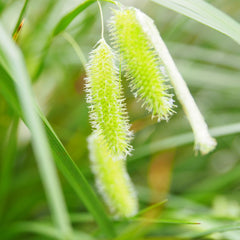 Frogs are an integral part of Australia's ecosystem, playing a crucial role in controlling insect populations and serving as indicators of environmental health. Unfortunately, with habitat loss and pollution, frog populations are declining at an alarming rate. As a pond owner, you have the opportunity to make a difference by providing a suitable habitat for these fascinating creatures.
Frogs are an integral part of Australia's ecosystem, playing a crucial role in controlling insect populations and serving as indicators of environmental health. Unfortunately, with habitat loss and pollution, frog populations are declining at an alarming rate. As a pond owner, you have the opportunity to make a difference by providing a suitable habitat for these fascinating creatures.
Frog Grass, also known as Carex fascicularis, is an Aussie native aquatic plant that thrives in the wetlands and ponds of Australia. It is a grass-like sedge plant with long, slender leaves and delicate flowers. Growing Frog Grass in your pond or dam not only enhances its aesthetic appeal but also creates a suitable environment for frogs to thrive.
 Frog grass makes an excellent (and tough) plant for rehabilitating dams. It is an excellent pond plant to use as a filter for water courses, inlets and stabilising dam walls. Frog grass is a great choice to filter out pollutants from the water that runs into your dam or large pond.
Frog grass makes an excellent (and tough) plant for rehabilitating dams. It is an excellent pond plant to use as a filter for water courses, inlets and stabilising dam walls. Frog grass is a great choice to filter out pollutants from the water that runs into your dam or large pond.
As an Australian native, it can tolerate our harsh conditions too. Ours has even survived being eaten by yabbies that commonly occur in dams.
Benefits of Growing Frog Grass in Ponds
- Shade and Camouflage: Frog Grass offers a dense foliage that provides shade and camouflage for frogs. This is essential for their protection from predators and excessive sunlight. The thick growth of the plant creates a safe hiding place for frogs, allowing them to feel secure and comfortable in their habitat.
- Egg Attachment: The roots of Frog Grass provide a stable platform for tadpoles to attach their eggs. This increases the chances of survival for the developing hatchlings. The dense root system also offers protection from predators, ensuring the safety of the eggs until they hatch.
-
Food Source: Frog Grass attracts a wide range of insects and invertebrates,
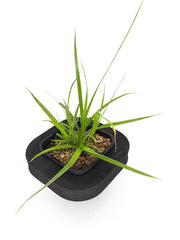 providing a natural food source for frogs. The plant's structure and habitat create an ideal environment for these small creatures to thrive. By growing Frog Grass in your pond, you are not only providing shelter but also a sustainable food source for insects such as butterflies.
providing a natural food source for frogs. The plant's structure and habitat create an ideal environment for these small creatures to thrive. By growing Frog Grass in your pond, you are not only providing shelter but also a sustainable food source for insects such as butterflies.
How to Grow and Maintain Frog Grass
Growing Frog Grass in your pond or dam is relatively simple, but it does require some care and attention. Here are the steps to successfully grow and maintain Frog Grass:
- Choose the Right Location: Select a spot in your pond that receives partial shade or full sunlight. Frog Grass thrives in areas with ample sunlight, but some shade is necessary to prevent excessive heat stress.
- Prepare the Soil: Frog Grass prefers moist, well-drained soil. Clear any debris or weeds from the area where you plan to plant the grass. Loosen the soil and remove any rocks or large clumps.
- Plant the Grass: Dig small holes in the marginal areas of your pond or dam, and place the Frog Grass plants in them. Gently cover the roots with soil, being careful not to damage the plant.
Creating a Frog-Friendly Habitat with Frog Grass
 To create a truly frog-friendly habitat, it is essential to consider the overall ecosystem of your pond. Here are some additional tips to enhance the habitat for frogs using Frog Grass:
To create a truly frog-friendly habitat, it is essential to consider the overall ecosystem of your pond. Here are some additional tips to enhance the habitat for frogs using Frog Grass:
- Provide Shelter: In addition to Frog Grass, incorporate other aquatic plants, rocks, and logs to create hiding spots for frogs. These structures offer additional shelter and protection from predators.
- Maintain Water Quality: Regularly test the water in your pond to ensure optimal water quality. Frogs are highly sensitive to pollution and changes in water chemistry. Maintain proper filtration and circulation to keep the water clean and oxygenated. Consider adding some oxygenating pond plants!
- Avoid Chemicals: Avoid using pesticides, herbicides, or any other chemicals in or around your pond. These substances can be harmful to frogs and other aquatic life. Opt for natural methods of pest control and weed management, such as manual removal or introducing beneficial insects.
Other Plants That Complement Frog Grass in Ponds
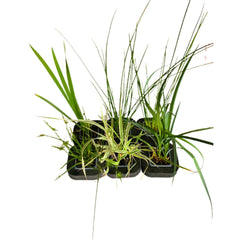 While Frog Grass is a fantastic addition to any pond, there are other plants that can complement its growth and provide additional benefits for frogs. We have a starter pack that has some of our key frog attracting pond plants featured. Some other pond plants include:
While Frog Grass is a fantastic addition to any pond, there are other plants that can complement its growth and provide additional benefits for frogs. We have a starter pack that has some of our key frog attracting pond plants featured. Some other pond plants include:
-
Running Marsh Flower (Villarsia reniformis): A small spreading ponf plant that provides resting places for frogs and provide a habitat for other aquatic organisms. Running Marsh is perfect to grow in the floating pond ring.
- Water Hyssop: Water Hyssop (Bacopa caroliniana) is an excellent floating plant that helps control algae growth and provides cover for frogs. When grown in our floating pond plant ring, Water Hyssop will trail its roots and leaves down into the water which provides cover for fish and tadpoles.
- Water Iris: Water Iris (Lake Ouachita) is a versatile plant that grows at the water's edge and provides a transition between the water and land. It offers shade, cover, and breeding sites for frogs.
Common Challenges in Growing Frog Grass and How to Overcome Them
While Frog Grass is generally easy to grow, there could be minor issues you may encounter. Here are some common issues and how to overcome them:
-
Algae Overgrowth: Excessive algae growth can outcompete Frog Grass
 and hinder its growth. To prevent this, grow your frog grass in the floating pond plant ring, ensure proper water circulation, maintain a balanced nutrient level, and introduce algae-eating fish or snails.
and hinder its growth. To prevent this, grow your frog grass in the floating pond plant ring, ensure proper water circulation, maintain a balanced nutrient level, and introduce algae-eating fish or snails.
- Weed Competition: Weeds can compete with Frog Grass for nutrients and space. Regularly remove any weeds that appear in your pond to prevent them from taking over.
- Pest Infestation: In some cases, pests like aphids or snails may feed on Frog Grass. Monitor your plants regularly and take appropriate measures such as picking off pests by hand or introducing natural predators.
How Growing Frog Grass can make Frogs Happy in your Backyard
By growing Frog Grass in your Australian pond, you are not only creating a visually appealing oasis but also providing a safe and comfortable habitat for frogs. The shade, camouflage, and food offered by Frog Grass contribute to the well-being and re- population of local species. Additionally, Frog Grass complements other plants in your pond, creating a harmonious ecosystem.
So why wait? Start growing Frog Grass today and welcome more native frogs to your backyard pond or water garden. Together, we can make a difference in the conservation of Australia's precious frog species.
© We Know Water Gardens 2024
Share
